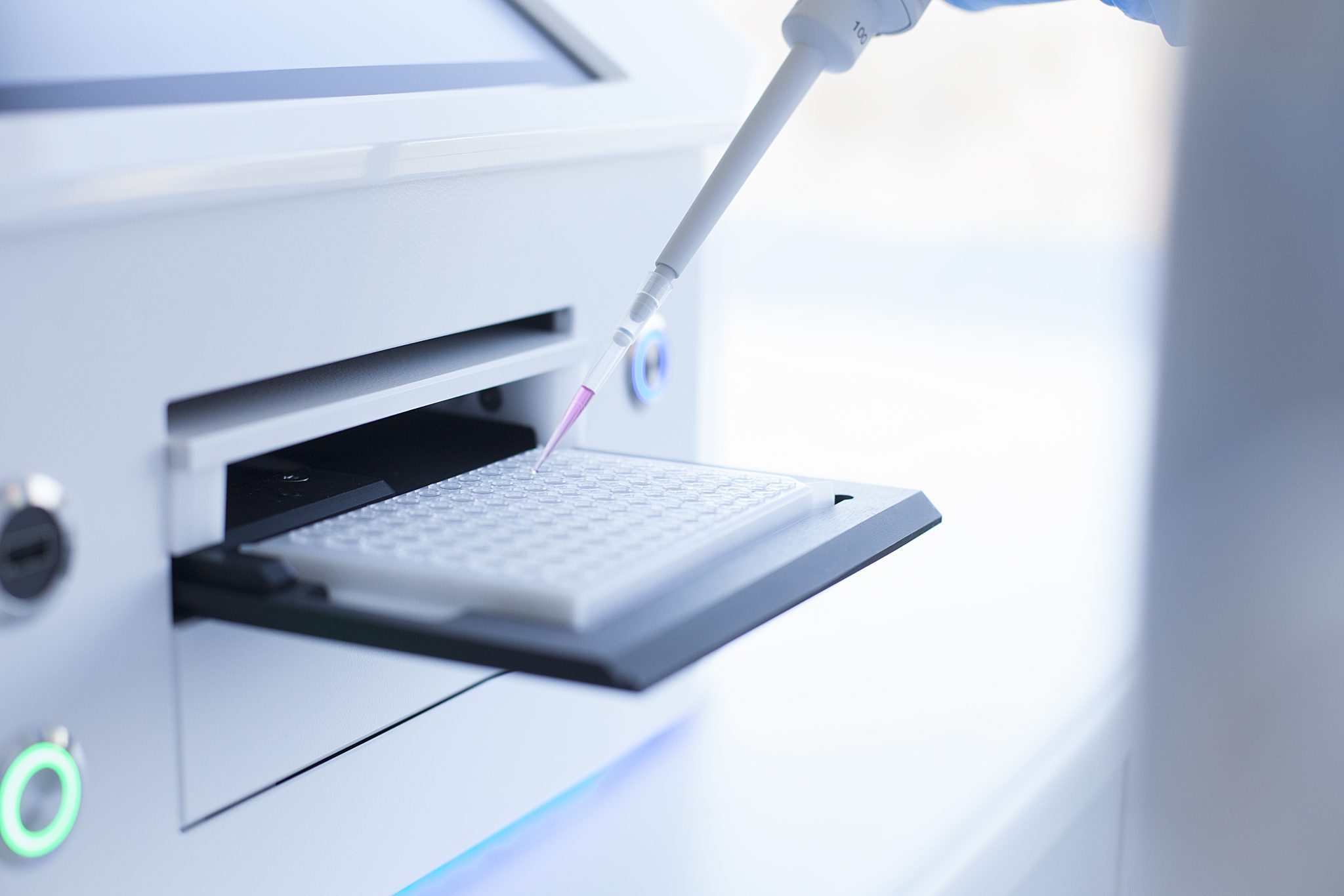Cellink: Can This Bioprinting Firm Reach a $10B Valuation?
Since 2019, bioprinting pioneer Cellink (OTC: CCLKF / CLNK-B.ST) has gone from a $257 million market capitalization to a $1.5 billion-plus valuation. Before it went public in 2016, this new threshold has propelled the company into the elite unicorn status, shared with more than 500 other companies worldwide. The global startup achieved the coveted market valuation in just over four years and became the first European Innovation Council (EIC)-funded unicorn. CEO and Co-founder Erik Gatenholm, who in 2018 made the cut on Forbes’ “30 under 30” list, has commercialized products used by more than 1,000 scientists across 60-plus countries, in almost 1,700 publications and 1,800 labs. Given its current growth pace, 2021 could be an ideal opportunity for further expansion, product development, acquisitions, and continued investments.
In a short time, Cellink has developed game-changing bioprinters and biomaterials, revolutionizing the field of tissue engineering with cutting-edge and cost-effective platforms. For Gatenholm, changing the paradigm for researchers worldwide is the path to advance healthcare. Following a string of acquisitions, including Dispendix, Cytena, Scienion, and Ginolis, Cellink continues growing its diversification strategy to provide a complete biotech workflow to its users.
 Cellink was successfully listed on Nasdaq’s main market in April 2020. Image courtesy of Cellink.
Cellink was successfully listed on Nasdaq’s main market in April 2020. Image courtesy of Cellink.The journey from startup to leader in the bioprinting sector has a lot to do with the dedicated attention Gatenholm offers customers and researchers. To achieve a billion-dollar valuation, Cellink “listened to customers” and understood precisely what they needed. The 31-year old Swedish entrepreneur told 3DPrint.com he spends a lot of time visiting customers, research partners, and just about anyone who acquires his company’s products to understand their work.
“I’m curious to see what our customers and partners are doing, talk about their research, and how they can develop even better products. Over the last three years, I spent over 250 days on the road visiting 500-plus customers and listening to what they had to say. This has become a precious lesson and the cornerstone of our company: we get involved with their work, highlight it, celebrate it, and have a genuine interest in their future,” noted Gatenholm. “Over the last two years, we’ve been working to expand further in the biotech and pharma industry. Today, about 60% of our revenue comes from these fields, and the rest is from academic users.”
 Karolinska Institute (KI) study shows Cellink’s I.DOT liquid-handling system can enable genetic cancer diagnostic research. Image courtesy of Cellink.
Karolinska Institute (KI) study shows Cellink’s I.DOT liquid-handling system can enable genetic cancer diagnostic research. Image courtesy of Cellink.Now, Gatenholm says he is after the $10 billion mark. The ambitious objective could happen sometime this decade, especially at the rate the company is growing. According to its year-end report, net sales for the period starting September 2019 through December 2020 escalated 167% to SEK 416 million ($49.3 million) from SEK 155.6 million ($18.4 million) a year earlier. Of the increase, 48% was organic growth.
Cellink is transitioning to reporting its finances per calendar year which means the company also posted results for a fifth quarter (Q5) – from September through December 2020. This was reportedly the strongest quarter ever to date, with high demand for products and a seasonally strong end of the year, with record net sales amounting to SEK 239 million ($28.3 million), an increase of 377% year-over-year. Moreover, the acquisition of Scienion has contributed with SEK 152 million ($18 million) in sales.
 Co-founders Erik Gatenholm and Héctor Martínez at Cellink’s first IPO in October 2016. Image courtesy of Cellink.
Co-founders Erik Gatenholm and Héctor Martínez at Cellink’s first IPO in October 2016. Image courtesy of Cellink.On April 20, 2020, Cellink shares began trading on Nasdaq Stockholm at SEK 103.60 ($12.27), following the move from Nasdaq First North, the Nasdaq’s Nordic market that had originally welcomed Cellink in October 2016 and had since seen its stock skyrocket over 2,500%. After almost a year in the main market, shares have more than doubled, increasing 257% to SEK 369.50 ($43.31). Moreover, ever since hitting the billion-dollar mark, company stock – trading under the ticker symbol CLNK-B – has been on a growth trajectory. The Nordic financial analysis group Infront even described Cellink’s growth score as significantly higher than other companies in the biotech sector, like Novavax and Acceleron Pharma.
During Q5, demand was good for several of the company’s products, such as the I-DOT, BIO X, F.SIGHT, and the successful launch of BIO X6 also generated orders. For the whole year, Cellink delivered slightly less organic growth than the year before due to the uncertainty of COVID-19 that took over predominantly the first half of the year and limited activity among existing customers. Despite the negative impact of the pandemic, the company managed to increase sales.
 Bioprinting for cancer research. Image courtesy of Cellink.
Bioprinting for cancer research. Image courtesy of Cellink.“During 2020 we saw some exciting applications with bioprinting, especially related to COVID-19. Just to name a few, we released an innovative liquid handling system called C.WASH that can help with high-throughput COVID-19 testing and research, researchers from the Karolinska Institute (KI) in Stockholm used our I.DOT technology for a genomic sequencing study of the coronavirus,” explained Gatenholm. “Looking ahead, we want to make sure to have a diverse product portfolio that enables researchers to print different tissues and organs. For example, with the new Ginolis acquisition, we want to provide the first automated tissue manufacturing line, which means researchers will rely on robots to print out different small tissues all day long.”
Strategically, Cellink is following the same road as Tesla. Musk’s innovative electric vehicle company focused on developing great motors, coupled with super-efficient batteries, and user-friendly software and product design. Similarly, Gatenholm wants his bioconvergence company to combine printers with automation, a beautiful design, and great software. More importantly, he wants to make it accessible to everyone. To incorporate such a wide range of technologies with biology, Cellink understands that, if they are not developing the technology that customers need, they will have to acquire it.
 Cellink’s BIO X6 six-printhead bioprinting platform enables users to combine more materials, cells, and tools, combined with Cellink’s Clean Chamber Technology and intelligent exchangeable printheads. Image courtesy of Cellink.
Cellink’s BIO X6 six-printhead bioprinting platform enables users to combine more materials, cells, and tools, combined with Cellink’s Clean Chamber Technology and intelligent exchangeable printheads. Image courtesy of Cellink.Lately, there has been a lot of talk of a timeline for creating a transplantable bioprinted organ in animals, and even though many researchers are optimistic that this technology could become available in 12 years, Gatenholm believes it might take longer. He considers that tissues like cartilage or skin and organ components might be a lot closer to realization. Although he still believes vascularization is an ongoing limitation to the evolution of the field, he is more worried about the biological interaction of 3D printed tissues, spheroids, and organoids and the regulation behind bioprinting, which could probably take some five to six years.
Moving forward, Cellink is interested in adding bioreactors to its product portfolio, either through acquisitions or in-house development, and pushing the limits of what is possible in medicine while materializing its vision of bioconvergence. Many surgeons want to get their hands on bioprinting technology immediately because they see the need in their field. But then, of course, Gatenholm says Cellink is cautious about approvals and certifications. For the coming decades, he envisions automated manufacturing lines that will produce customized biological implants using patient’s own cells, packaged up and sent to clinics and surgeons.
Subscribe to Our Email Newsletter
Stay up-to-date on all the latest news from the 3D printing industry and receive information and offers from third party vendors.
Print Services
Upload your 3D Models and get them printed quickly and efficiently.
You May Also Like
Ohio Ordnance Works Partners With Velo3D on Metal 3D Printing for Defense Initiative
Metal 3D printing firm Velo3D announced that it has partnered with Ohio Ordnance Works (OOW), a Class III arms manufacturer. The company makes the REAPR machine gun and SAW, BAR,...
Broad Spectrum Additive at the US Air Force
If we look at how Air Forces around the world use additive manufacturing, a lot of the attention is focused on future possibilities in hypersonics and next-generation aircraft. Beyond the...
EOS Releases Medical Device Master File for M290 3D Printer
Laser powder bed fusion (LPBF) firm EOS has released a Medical Device Master File that will make it easier for customers to achieve regulatory success. The file will essentially be...
Push Button Metal 3D Printing for $50,000?
In 2021 we wrote an article about “Push Button Metal, the low cost metal 3D printing evolution we are not talking about.” In it, we talked about One Click Metal,...





























